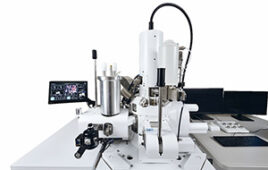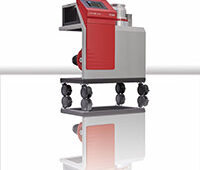A test tube, also known as a sample tube, is a clear cylindrical vessel with a closed bottom and an open top. Test tubes are very common in laboratory testing and experimentation. The exact design of test tubes depends on their intended use. Uses for test tubes include storing samples on the bench, refrigerator or freezer, performing various tests, microbial culture, and centrifugation. Configurations include:
- Typical 10 to 20 mm in diameter and 50 to 200 mm in length
- Glass or plastic material
- Round-bottom, flat-bottom or conical-base.
- Rimmed or rimless.
- Screw top, plain top or fitted with ground glass sockets suitable for stoppers or push-on caps.
- Thin-walled, medium-walled or thick-walled
- Graduated walls for measurement
When most people think of a test tube, the chemistry test tubes they used in school will probably come to mind. Typical chemistry test tubes are made from glass with the cylinder closed at the bottom to form a hemisphere, and the edges of the open top rolled over. The use of low thermal-expansion glass enables these test tubes to withstand rapid heating to several hundred degrees Celsius. This allows samples to be headed over a Bunsen burner. The hemispherical base facilitates cleaning while the rolled edge at the top facilitates pouring. Test tube racks are used to hold the test tubes in a vertical orientation.
In biology and biomedical sciences, disposable plastic tubes with flat bases are more commonly used. In biology, culture tubes are used to contain living samples such as molds and bacteria. These culture tubes are generally fitted with a lid and they may be stored in a horizontal orientation to increase the surface area of the sample.
In biomedical sciences, vacutainers are used to draw a set volume of liquid such as blood. They are supplied in a sterile condition with the air evacuated from their interior and a color-coded rubber stopper sealing the top to preserve the vacuum. Vacutainers are used with a special double ended needle, one end of which is inserted into the patient and the other through end through the stopper. The sample then naturally expands to fill the vacuum





Tell Us What You Think!